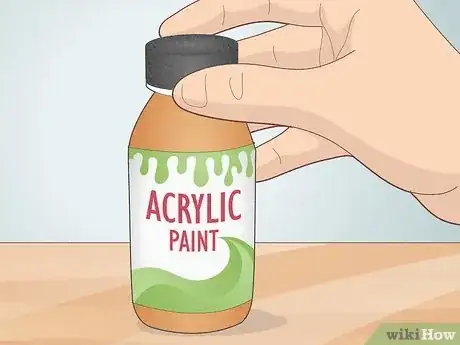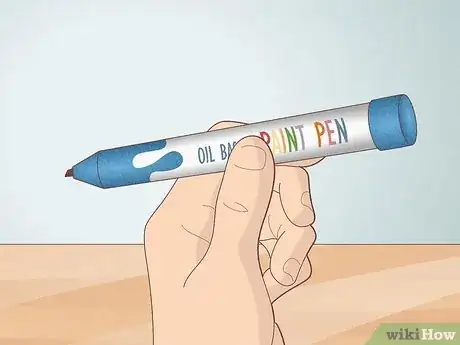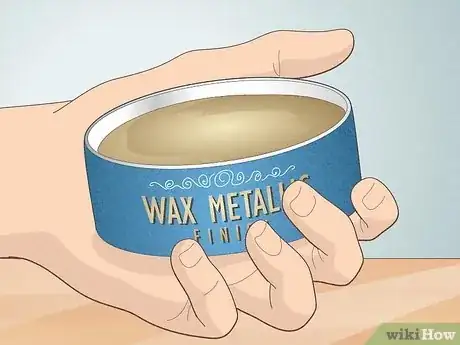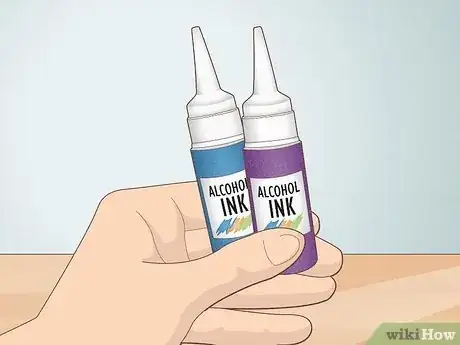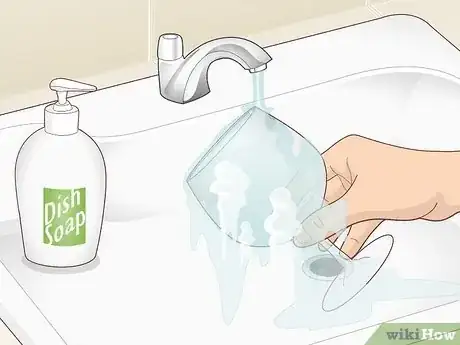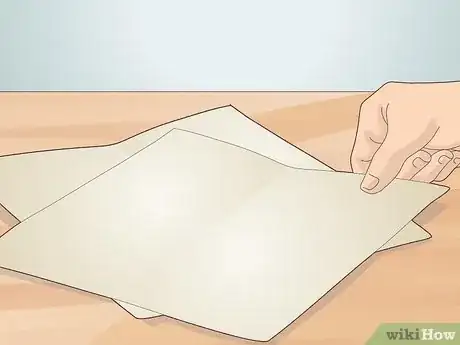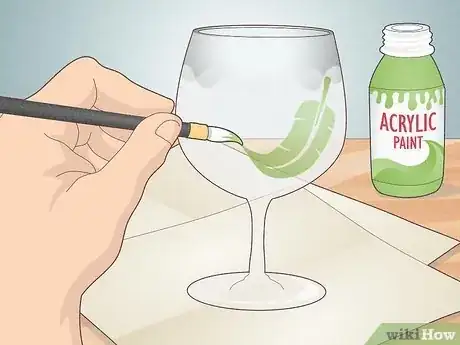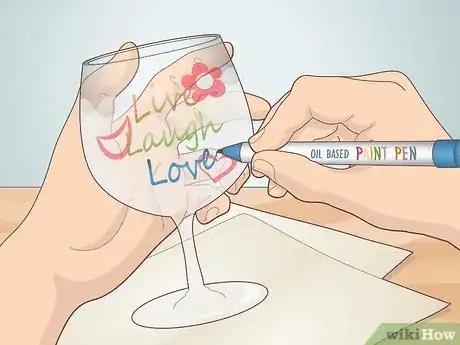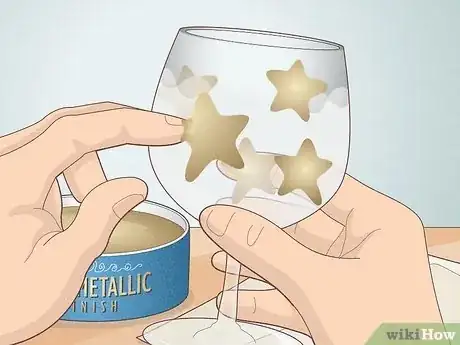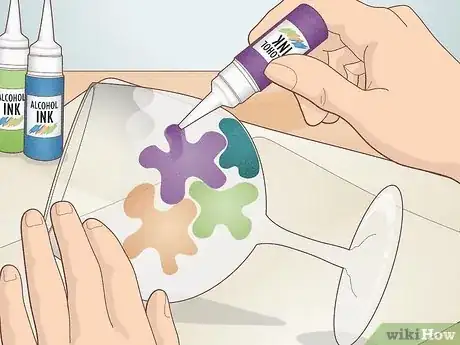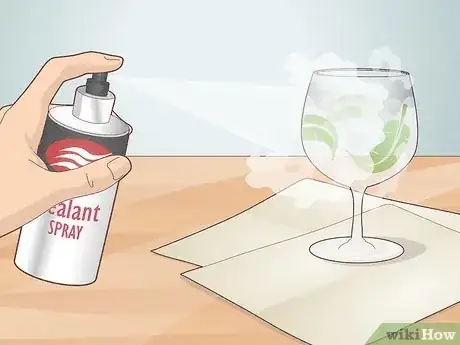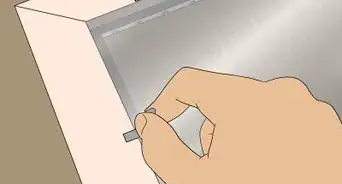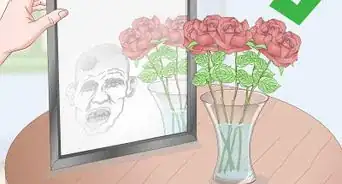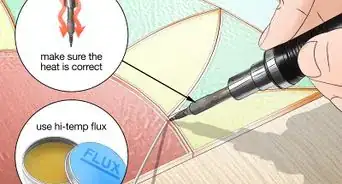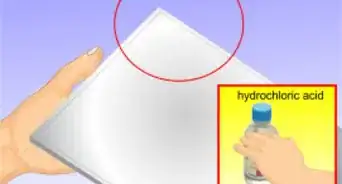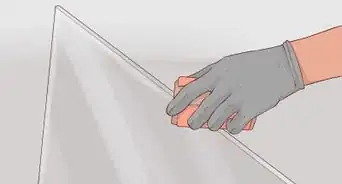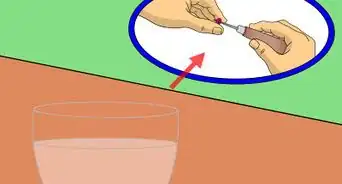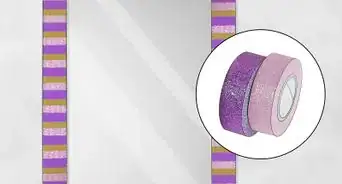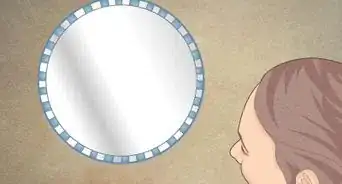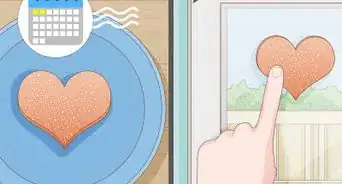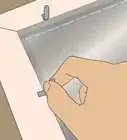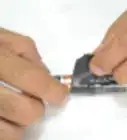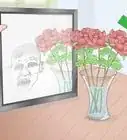This article was co-authored by wikiHow staff writer, Aly Rusciano. Aly Rusciano is a Creative Writer based outside of Nashville, Tennessee. She has over ten years of experience in creative, academic, and professional writing. Aly’s writing has been nationally recognized in the Sigma Tau Delta Rectangle and featured in Blue Marble Review, The Sunshine Review, PopMatters, and Cathartic Literary Magazine. She graduated from The University of Tennessee at Martin with a BA in English, focusing in Creative Writing and minoring in Theatre.
There are 13 references cited in this article, which can be found at the bottom of the page.
This article has been viewed 49,882 times.
Learn more...
Want to add some color to your etched glass? Well, you’ve come to the right place! Painting etched glass is a super fun DIY project that lets you personalize just about any glassware, and it’s relatively simple to do. All you need are a few materials, the paint of your choice, and a little imagination. Keep reading to learn how to paint your etched glass to look like something straight out of Pinterest.
Steps
Choosing Your Paint
-
1Use enamel-based acrylic paint for easy painting. Enamel-based acrylic paints are designed to adhere to glass and look transparent or vibrant, depending on the number of coats you apply. The versatility and range of colors of these paints make them ideal for almost any etched glass project.[1]
- Enamel-based acrylic paints work best for multi-colored designs with shading such as flowers or artistic landscape scenes.
- There are also specific glass paints on the market that work very similarly to acrylic paint.
- Double check that your acrylic paint is non-toxic, especially if you want to eat or drink off it. Non-toxic paints will be labeled as “non-toxic” on the packaging and don’t contain vegetable oils, solvents, or chemical additives.[2]
-
2Try oil-based paint pens to color-in lettering. Paint pens or markers are a great easy option if you’re not a “painter.” The translucent hue these pens creates is gorgeous, and you can continue layering paint for an opaque look. All you have to do is hold the pen and color—it’s as simple as that![3] This medium, however, should not be used on glassware that will be eaten off of as the paint inside these pens can be toxic.
- Paint pens work best for calligraphy, letter, and simply colored designs.
Advertisement -
3Decide on a wax metallic finish for a sparkling, one-toned look. A metallic rub is probably your best bet if you want to cover the entire etching design in one color. This medium is typically water-based but is not food safe.
- Wax metallic finishes work best for one-dimensional designs, lettering, or shadow-castings.
-
4Use alcohol ink for a watercolor look. A pigment dye or tint could be the perfect medium for you if you’re looking for something quick and simple. Alcohol inks stain porous and nonporous surfaces, making them perfect for painting etched glass. When sealed correctly, glass with alcohol ink can be washed and eaten out like normal; however, the design should always be painted outside the glass or where food/drink won’t touch it.[4]
- Alcohol inks work best for abstract and watercolor designs of a single color.
Painting Etched Glass
-
1Clean the etched glass with soap and water.[5] Before you do anything, wash your etched glassware. This will remove any dirt, dust, and excess oils, leaving your glass sparkling and ready to paint.
-
2Cover your work surface with newspaper or paper towels. No matter what paint you’re using, it’s always best to cover your work surface in case of any spills. Line the table you’ll be working on with newspapers, magazines, or paper towels.
- Having a clutter-free and prepped space where you don’t have to worry about making a mess can make your crafting experience even more relaxing.
- If you’re sensitive to paint fumes, set up your work surface in a well-vented area with an open window.[8]
-
3Use a paintbrush to apply acrylic paint to etched glass. Paint brushes come in a range of sizes, making them great for adding just about any design to your glass. For example, dip a smaller brush in some green paint to outline an etched leaf, and add some color to an etched rose with a squared brush.[9]
- Add small, intricate details to your design by painting over the etched part of the glass with a paintbrush and acrylic paint.
- Feel free to use a stencil to get a perfect, crisp design. You can use the stencil you used to etch the glass or place a new stencil over a pre-etched design.
- Let the paint dry before adding another color; otherwise, the colors will bleed together.
-
4Color in the etched design with oil-based paint pens. This medium is super easy for just about anyone—think of it like staying in the lines of a coloring book. Shake up the marker and start coloring in the design. Use a paper towel to wipe away the excess paint for a sheer look while the paint is still wet. If paint gets outside the etched area, use a cotton swab dipped in alcohol to wipe it away.[10]
- Try using multiple colors if you’re coloring in a phrase. For example, for a “Live, Laugh, Love” calligraphy design, you could color each word with a different color.
-
5Rub a wax metallic finish on your design for extra sparkle. Place a little bit of the product on your finger and rub it on the etched part of your glass. Keep coating the glass until you're happy with the color—the more layers you add, the brighter it will be. Buff the excess wax with a paper towel to wipe away any clumps and reveal your painted design.[11]
- If you don’t want to get messy, wrap a paper towel around your finger and rub the wax in.
-
6Drip alcohol ink on the etched part of the glass. Take your preferred ink color and use the dropper applicator to place a few drops on the glass’s surface. Use a paper towel to rub the excess away. Continue doing this until there’s pigment on your entire design.[12]
- Try creating a multicolor flood design by dropping a large amount of one color onto the glass followed by small droplets of another color.[13]
-
7Seal your painted design so it lasts longer. This step is optional but will make your painted etched glass food- and dishwasher-safe. Plus, it’ll lock in your masterpiece so you have it forever! Use either a sprayable sealant or a dishwasher safe Modge Podge, following the instructions on the back of the product you choose.[14]
- Seals usually need to dry for at least 24 hours.
- Some glass paints come with a built-in sealant that requires curing. All this means is you’ll be sticking the glass in the oven following the product’s specifications.[15]
- Always use non-toxic paint if you’ll be eating off your painted etched glassware.
- Never paint the inside of wine glasses or cups. Keeping the paint on the outside will ensure it’s food safe.
Things You’ll Need
- Etched glassware of choice
- Enamel-based acrylic paint
- Glass paint
- Oil-based paint pens or markers
- Wax metallic finish
- Alcohol ink
- Paintbrushes
- Rubbing alcohol
- Paper towels
- Sprayable sealant (optional)
- Dishwasher safe Modge Podge (optional)
References
- ↑ https://artincontext.org/acrylic-paint-on-glass/
- ↑ https://artincontext.org/is-acrylic-paint-toxic/
- ↑ https://jennifermaker.com/color-glass-etching/
- ↑ https://tasteofpurple.com/blogs/learn/how-to-seal-alcohol-ink-on-wine-glasses
- ↑ https://www.cleaninginstitute.org/cleaning-tips/dishes/wash-dishwasher-or-hand/wine-glasses-crystal
- ↑ https://glassdoctor.com/blog/how-to-properly-clean-your-etched-glass
- ↑ https://youtu.be/BK7PbmFfy64?t=132
- ↑ https://artincontext.org/is-acrylic-paint-toxic/
- ↑ https://youtu.be/fnOOOiwJJNM?t=287
